Part 24: EX Update 3 - Products
Most successful games have at least some form of other product produced, even if it's something small like keychains or a poster. Since Megami Tensei's first release in the 80s, its fanbase has grown larger and steadier, and by the time Devil Summoner came out there was enough of a fanbase to have quite a number of items produced for it.With this update, I'll attempt to show off every official Devil Summoner product released.
SOFTWARE
As I've already discussed the original release and Akuma Zenshou, I won't say anything about them here. I do have some flyers and ads for both of them, though.
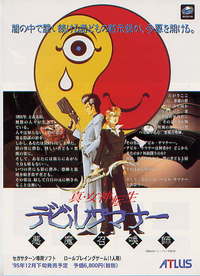
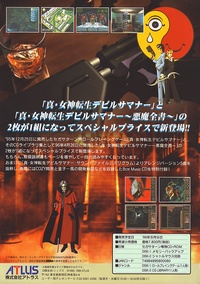
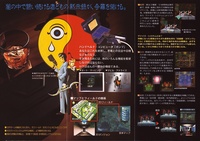
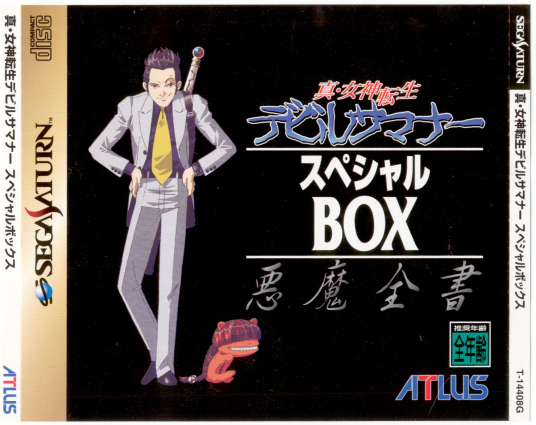
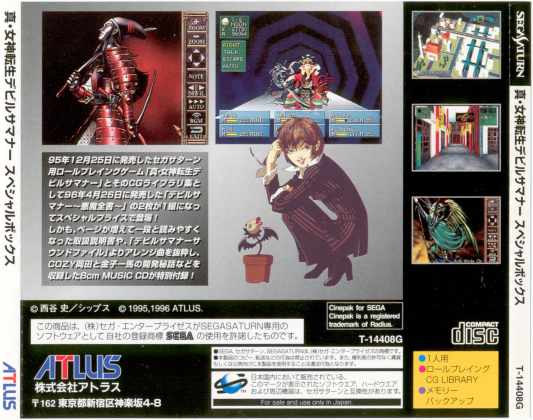
A special edition of the game, called the Special Box, was released on August 9, 1996. It contained two discs - one had the original game with some bugs fixed and the other had Akuma Zenshou. The Special Box also included a mini CD that contained an interview with Kazuma Kaneko and Okada Kouji that was backed by small clips of music from the arranged soundtrack.
In addition, the manual included a map of Chinatown and clearer instructions on how to raise loyalty. The game retailed at a 7800 yen price point (~$66 at the time of release).
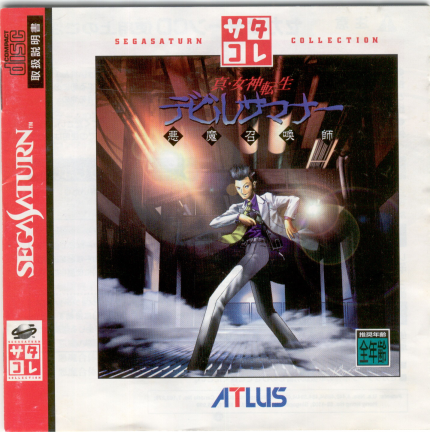
SMTDS sold well enough to be re-released under the Saturn Collection line on June 20, 1997. Similar to Sony's Greatest Hits line and Nintendo's Player Choice line, games released under the Saturn Collection line were sold at a lower retail price (2800 yen, ~$27 at the time of release) and given different casing. It contains the bug fixes from the Special Box edition but is otherwise identical to the original release.
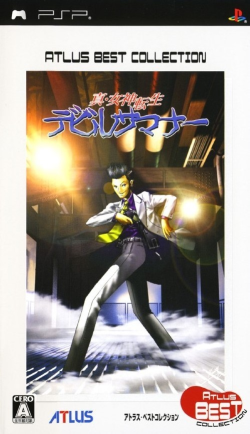
I already discussed the PSP version but, like the original Saturn version, it sold well enough to warrant inclusion in the Atlus Best line on March 8, 2007 at 2940 yen (~$25 at the time of release).

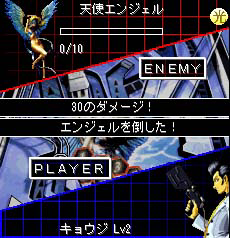

Japan loves their mobile games, so it's no wonder Devil Summoner got a phone game as well. The catch? It's a pinball game. Shin Megami Tensei Pinball - Judgement was developed by Kaze and released in 2006. To be fair, it does take cues from the game itself and contains elements such as devil fusion and summoning as well as an alignment system.
According to magazines, Devil Summoner may have been at one time slated for an English release. It was mentioned in the magazines GameFan and Game Players, which stated that it would be released in June 1996. Here's a page from GameFan, with the transcript located below:

quote:
Despite the hard RPG elements, morally questionable content, and thousands of pages of Japanese text, Shin Megami Tensei: Devil Summoner is actually coming to the U.S. If you're not familiar with the MegaTen (the hip Japanese nickname... don't I just think that I'm sooo cool?) series, don't feel bad. Despite the fact that a new MegaTen game comes out seemingly once every 45 minutes in Japan, they're been totally neglected by American game companies...until now. Atlus, the developers of the series, is bringing it out here in time for an early summer release.
MegaTen's world is a weird one. The setting is present day Japan, but the mood is a unique hybrid of Shadowrun-esque cyberpunkedness and ancient daemonic lore. The game system is similar to Wizardry, almost entirely first-person and with lots of enemy encounters. But one feature unique to the MegaTen series is the ability to just talk to your foes... you can make friends, bribe them to leave you alone, or try to coerce them to join your party. Sometimes they'll even bribe you not to kill them.
The character you play is just a normal Japanese boy. Your girlfriend calls you up, and you go out to get some coffee, and run a few errands at the library. Since she forgot her library card, you let her borrow yours to check out some weird book that theorizes that Japan uses to be ruled by mages who could command demons. As you walk home alone, you're confronted by a very evil looking fellow, who kindly offers to not kill you if you immediately hand over the library book that's checked out under your name. You don't have it, but he's not about to buy that, and lives up to his end of the bargain... so nary 15 minutes into the game, you're dead. But after a very cool death sequence, you meet Death, who informs you that it wasn't your time to die. Unfortunately, your body isn't in very good shape, so what's he supposed to do with you...? When you wake up, you find yourself in the morgue, now occupying the body of a mysterious, polyester-clad, heavily-armed man who saved you from what appeared to be an army of monsters earlier in the day, but died soon after.
A few problems. It seems that his soul isn't too happy about this arrangement, as Death's little game of musical chairs has left him without a physical form. Second, you have to take on his duties, which include controlling the demons that are invading Japan, and third (shiver), polyester? Ugh! The suit and hairstyle hurt, but he does have a mage-i-licious girlfriend, tons of allies all around the city, and access to some very advanced weaponry, so assuming his form is not without its high points...
As you can see, Devil Summoner has clean, crisp 3-D graphics (just saved as animation, not as real polygons, like in Phantasy Star), excellent enemy design, and the best FMV I've ever seen on the Saturn (and there's plenty of it, too). We've barely scratched the surface of the Japanese release, but I can't be more excited that someone finally has the guts to release an RPG as innovative, mature, and challenging as Devil Summoner. Rest assured that we'll be back with more on this title as it nears its domestic release.
There were also rumors that the PSP remake of Devil Summoner would be hitting American shores, but a 2006 interview with an Atlus USA employee denied this and said that the company would instead focus on new entries and that the lack of localization was unrelated to the content of the game or censorship issues.
BOOKS
Devil Summoner had three strategy guides released for it, all published by the company Aspect.
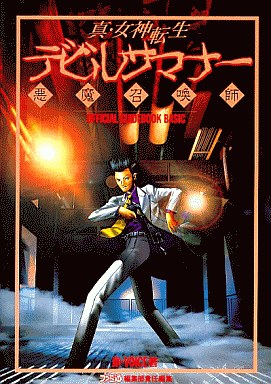
The first was the Official Guidebook - Basic Version. It was written by Ida Masashi AKA JK-VOICE, who wrote several other guidebooks for various RPGs. There's almost all the information you need, with maps, item and demon data, and information on fusion. There are a few mistakes here and there, but the presentation and content are mostly top-notch.

The second book, also by JK-VOICE, is titled Official Guidebook - Final Version. This version covers the hidden dungeon, information about the Hero and Enigma race of demons, boss data, etc. In addition, it contains staff interviews, further information on characters and locations, and a section that shows off the potential real-life inspirations for certain in-game locations.
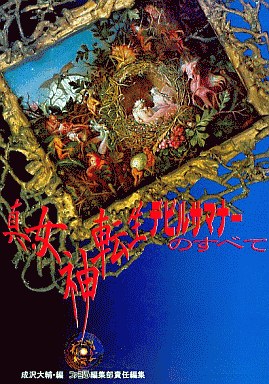
The third book, Complete Devil Summoner, is the only one not written by JK-VOICE. Instead it's written by a name named Narisawa Daisuke, who had also done the strategy guides for the first two Megami Tensei games. It seems that Daisuke was either using an earlier build of the game or playing in debug mode, as there's many times in text and pictures where he is displaying information not in the final game. Perhaps the largest problem with the book, which is labeled as "Complete," is that there is no information on the hidden dungeon at all.
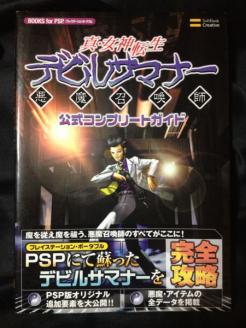
There was also a guidebook released for the PSP version of the game, but I don't know much about it.
My copy of Devil Summoner actually came with an advertisement for the three Saturn guidebooks:

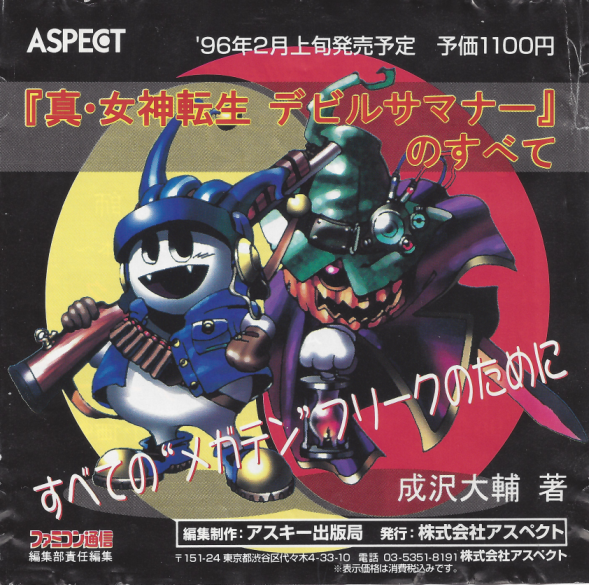
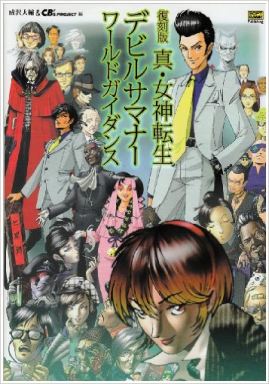
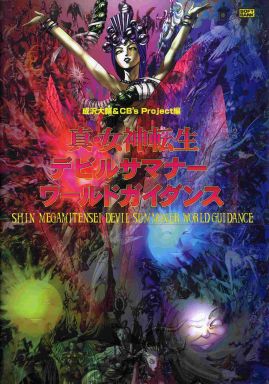
As for non-guidebooks, first is a book called World Guidance. This book has artwork and commentary by Kazuma Kaneko, as well as information about the demons. It's best to use this only as an artbook, as commentary is sparse and the artwork is large and on-display.
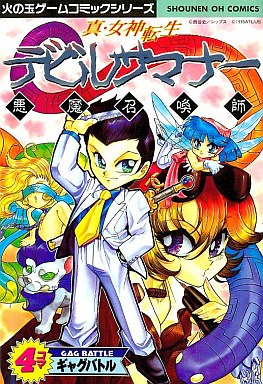
There was also a four-panel comic collection published, though as I don't own it I can't comment on the quality.
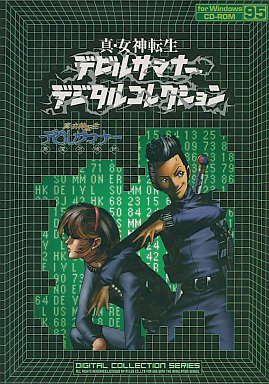
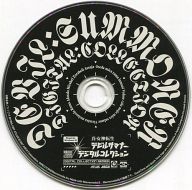
The Devil Summoner Digital Collection is where things get interesting. Part of the Digital Collection Series, it comes with a disc loaded with special stuff for your computer. The disc includes things such as special movies, a dress-up game, fortune-telling, quizzes, screensavers, wallpapers, desktop themes, calculators, and calendars. The book that comes with it includes illustrations and essays by Kaneko, special frames for print club pics, stickers, postcards, and a double-sided poster.

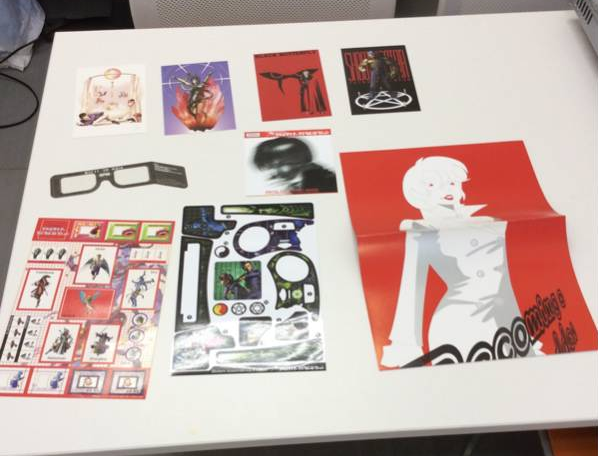
The last of the books are the novels, five in total.
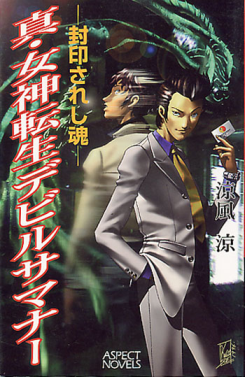
The first is Shin Megami Tensei: Devil Summoner - Sealed Soul, published June 10, 1996. It was written by Suzukaze Ryou and contains illustrations by Kazuma Kaneko. This is a basic novelization of the game's story and, in a nod to the original Megami Tensei novels, the hero (Echi Jun'ya) becomes partners with the demon Cerberus.
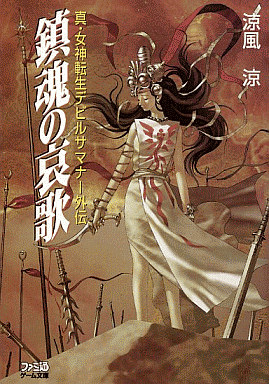
More interesting is the novel Shin Megami Tensei: Devil Summoner Side Story - Lamentations of a Requiem, published September 28, 1996. Suzukaze Ryou returns as the author, with Kazuma Kaneko doing the cover while Shigenori Soejima did the book's illustrations. This novel focuses on the history behind the story told by Professor Azuma concerning the ancient country who resisted the unification of Yamatai-koku. Several new characters appear, including An, Inaruna's mother and the queen of the country, as well as Enki, a warrior who wishes to wed Inaruna.
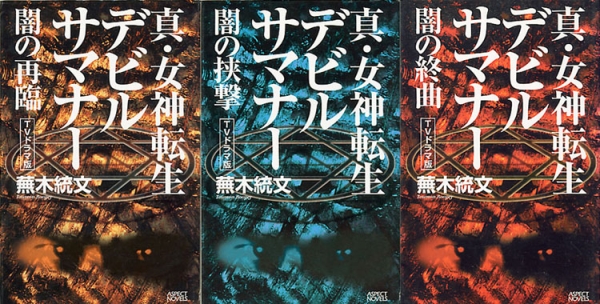
The last three novels are novelizations of the drama version of Devil Summoner, though they contain quite a bit of original content as well. The novels, written by Bugi Toumon and released in 1988, are titled:
Shin Megami Tensei: Devil Summoner - Second Coming of the Darkness
Shin Megami Tensei: Devil Summoner - Flank of Darkness
Shin Megami Tensei: Devil Summoner - Finale of Darkness
AUDIO/VISUAL
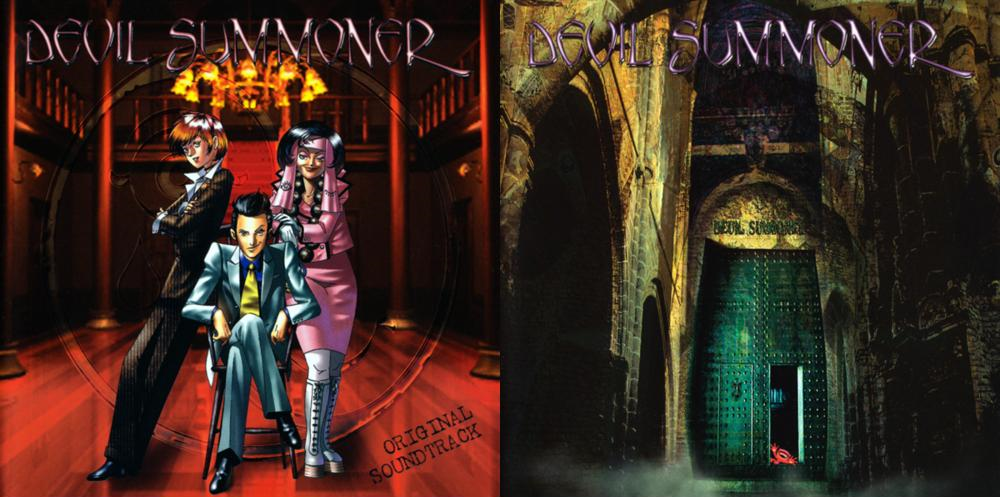
The official Devil Summoner soundtrack was released June 1, 1996 and contained two CDs - one had the original soundtrack, while the other contained arranged tracks. The soundtrack was composed by Masuko Tsukasa and Toshiko Tasaki, with this soundtrack being Tasaki's first job as a composer.
There's actually some music in the game that doesn't appear anywhere on the official soundtrack - Cornered, After the Battle, Situation, and Astral Meeting, all of which I had to title myself.
Both of the composers wrote liner notes, some of which have been translated here.
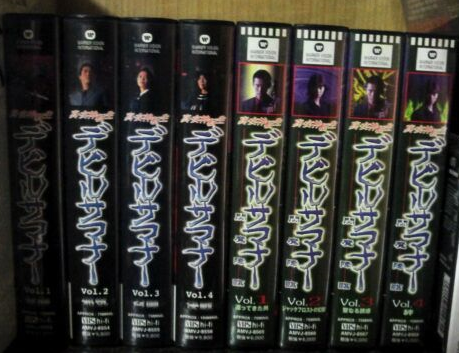
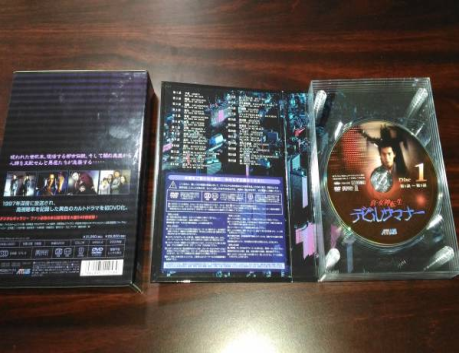
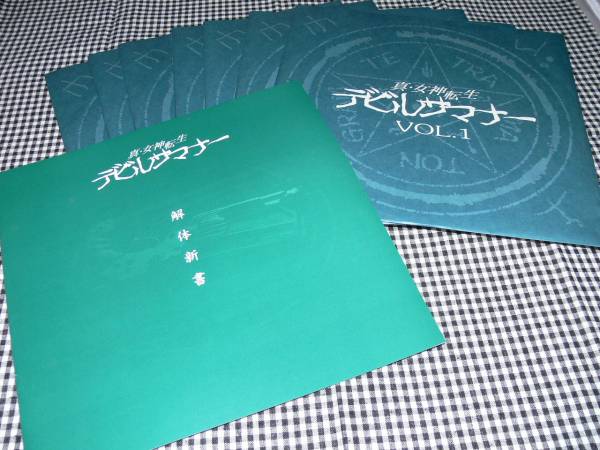
I'll be getting into more details about the live-action drama series in another update but this series, which ran from October 4, 1997 to March 28, 1998 on TV Tokyo, was released on VHS, Laserdisc, and DVD. This series is a radical departure from the game, with the biggest change being that the whole body-switching plot point is completely nonexistent.
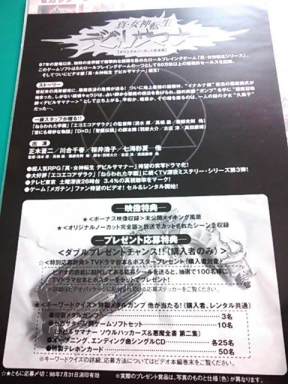
It seems that buyers of the DVD release were able to enter a sweepstakes to win prizes, including a metal GUMP, a copy of Soul Hackers and Akuma Zenshou ~Second Collection~, a CD with the OPs and EDs, and a telephone card.
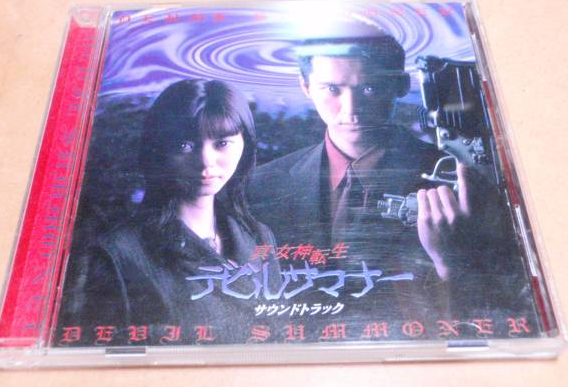
They also released a soundtrack CD for the drama series that included the OPs and EDs as well as background music.
CARDS
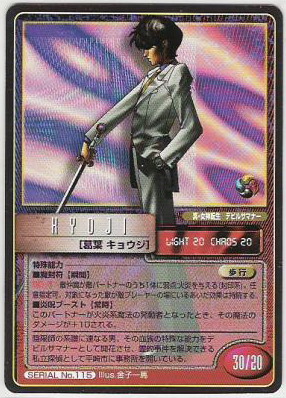

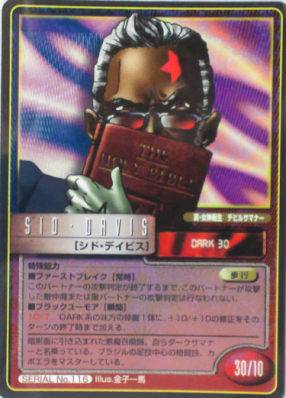
Like many media franchises, Shin Megami Tensei had its own trading card game. The main game, released by Enterbrain and simply called "Shin Megami Tensei Trading Cards," started in 1997 and ceased in 2003. In it, players are Devil Summoners who start with 200 HP and must lower their opponent's HP to 0. There are Demon cards, Partner cards, Magic cards, and Item cards, and other MegaTen elements such as Magnetite and alignment.
Other than that one, there were four other MegaTen card games released, but only three had any cards relating to Devil Summoner.

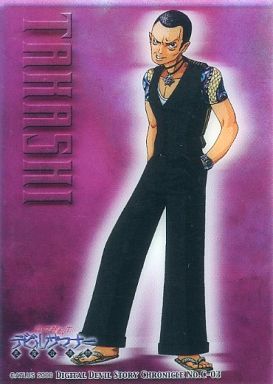
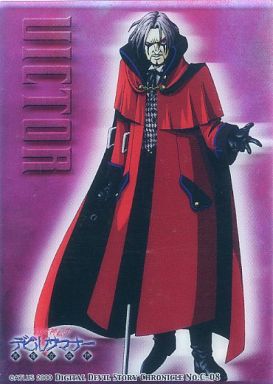
First is Visual Trading Card: Shin Megami Tensei Chronicles, released by Professional Pacific Japan in 2005.

Next was Shin Megami Tensei Encyclopedia Trading Cards, released by Hobby Japan in 2001.

Last was Shin Megami Tensei Card Game, released by Media Factory in 2003. The Devil Summoner packs were released in late 2004.
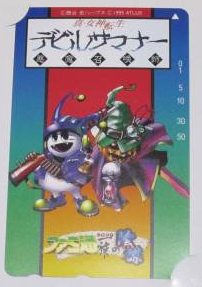
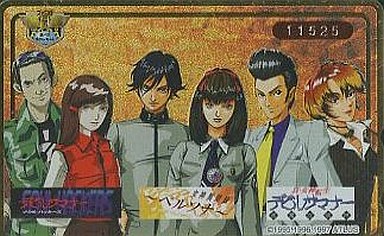
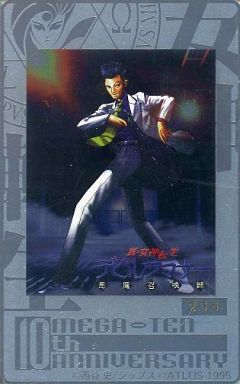
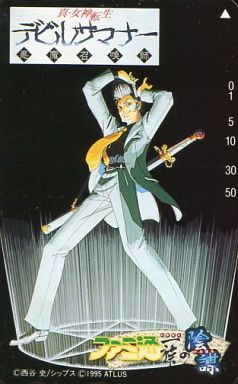
Devil Summoner was also the subject of a few telephone cards released by the gaming magazine Famitsu.
FIGURINES
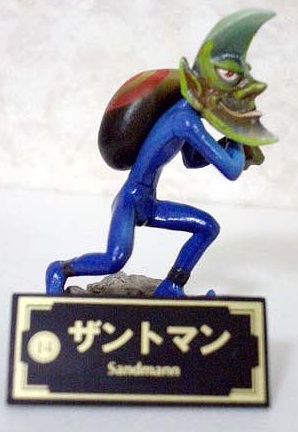
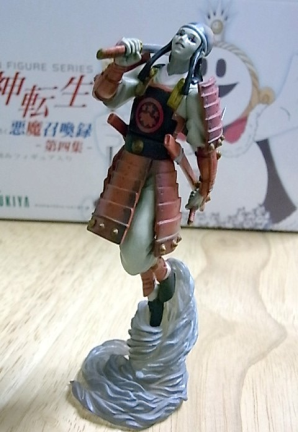
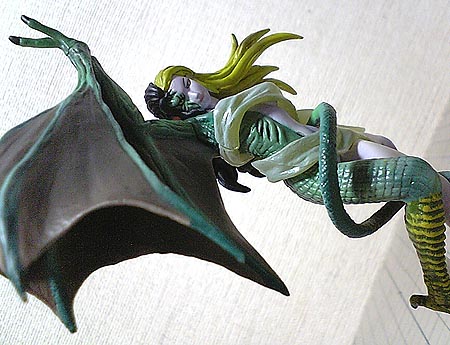
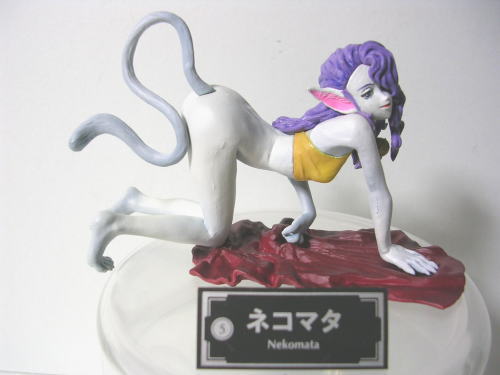
Although the humans of Devil Summoner have never gotten the figurine treatment, four of the demons who originated in Devil Summoner were made into figurines for Kotobukiya's 2005 One Coin Figure series for Megami Tensei.
Now for something more...
UNOFFICIAL
Never underestimate the love a fan has for a game! I've trawled the Japanese web to find some cool fan-made creations. First are some fan figurines.

Perhaps the two most impressive works are from an unknown sculptor whose works were found at Wonder Fest 2002. Well, technically the Dr. Thrill is based off of his Soul Hackers appearance, but I believe it counts.
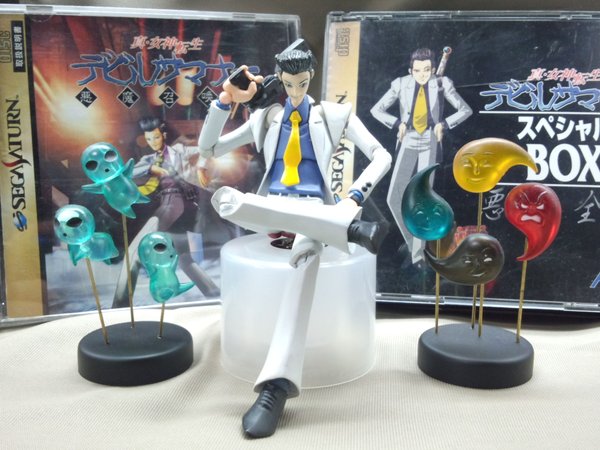

Here are two Kyouji figurines, the top one made by yuuji and the bottom one made by udonday.
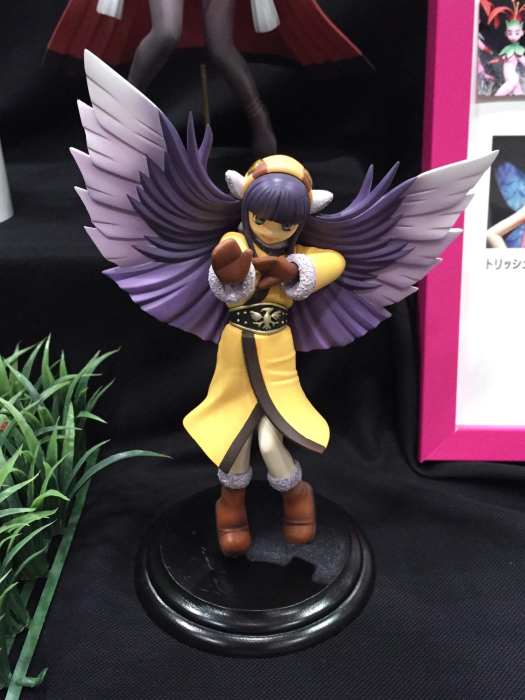
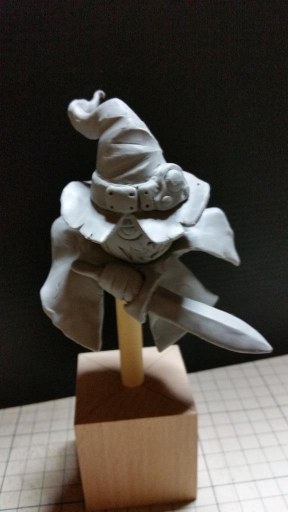
For demon figurines, Burikko Rori created a Moh Shuvuu in her SMTDS colors, and seems to be working on the DB Busters.
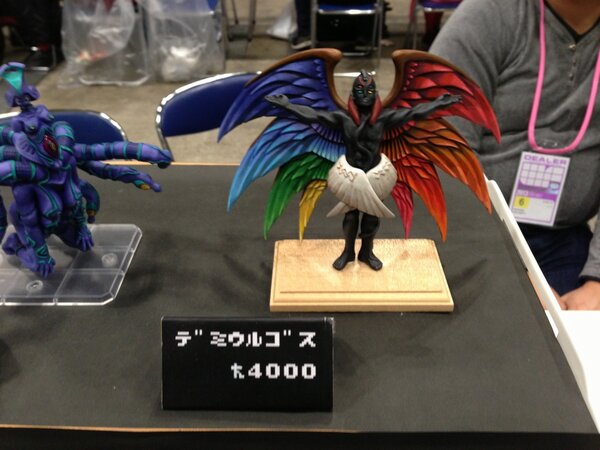
Another unknown sculptor found at Wonder Fest made a Demiurge.
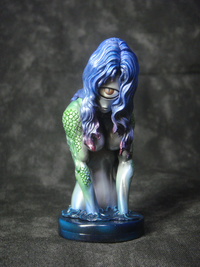
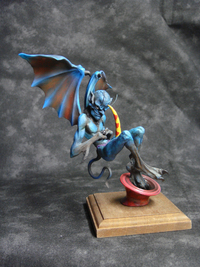
Lastly, CHEMICAL REACTION made two beautiful blue figurines, one of Sedna and one of Incubus.
If you're into MIDIs (and why wouldn't you be?), Blue Wish has done some Devil Summoner tracks, as well as music from some other MegaTen games.
If you have a Nicovideo account, you can also check out some boss battle remixes: 1, 2, 3.
And lastly, some fanart sites:
NOP
Romance Way
AciD
Megami Tensei Picture Storage (fair warning, they do some art of MegaTen's more
 demons)
demons)